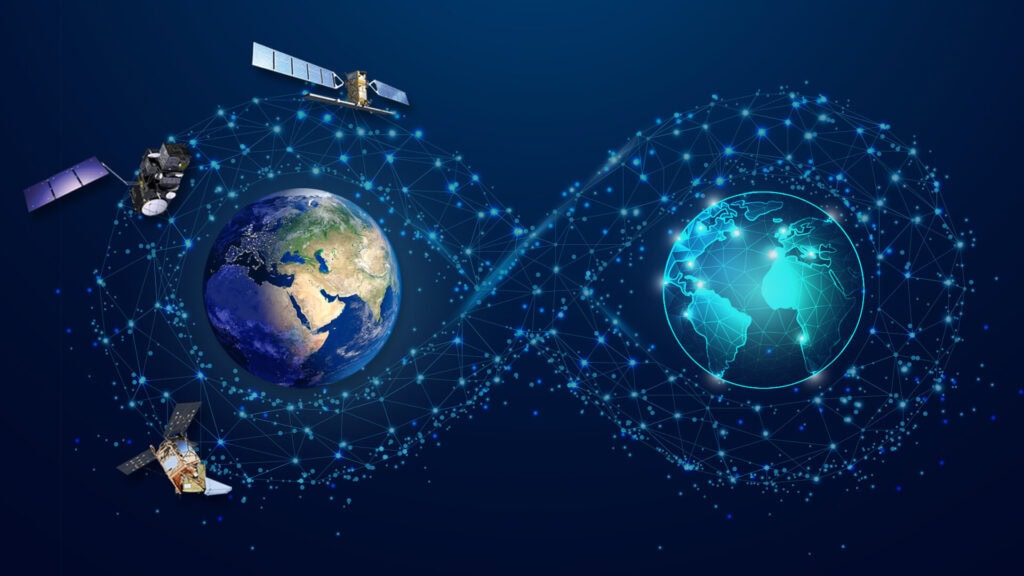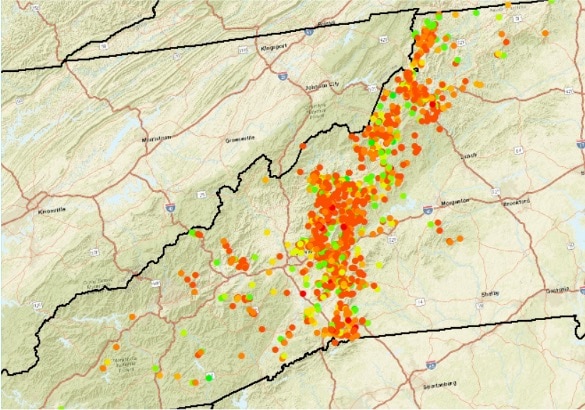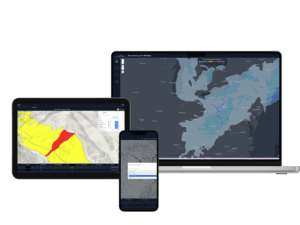This article follows up on insights shared during the Pennsylvania Geospatial Coordinating Board’s recent webinar on AI-powered digital twins and quality of life innovations, featuring Kat Kraft, VP of Market Development at Teren.

The environmental technology landscape is undergoing a remarkable transformation, with digital twins emerging as a powerful tool for understanding and managing our planet’s complex systems. These virtual representations are revolutionizing how we interact with and protect our environment.
“The transformation of Earth observation data is a fundamental shift in how we conceptualize the relationship between data models and physical reality,” explains Kat Kraft, VP of Market Development at Teren, in the recent webinar “A Future Powered by AI: Digital Twins and Quality of Life Innovations“. “With the rise of digital twins, the boundaries between the digital and physical realms are dissolving, and digital environmental twins allow us to interact with our environment in a virtual space that is not only a reflection of reality but a predictive tool for shaping our reality.”
The Journey from Maps to Environmental Twins
The evolution of environmental modeling has been extraordinary. From hand-drawn maps and relief globes in the pre-1900s to today’s sophisticated digital twins, our ability to represent and understand Earth’s systems has grown exponentially. The 1960s-1980s marked a pivotal moment with the launch of satellites and early computers, enabling the first true 3D environmental models.

The real game-changer came at the turn of the century, with Geographic Information Systems (GIS) and Computer-Aided Design (CAD) making environmental modeling tools accessible to a broader audience. This democratization of technology set the stage for today’s environmental twins. Early AI and machine learning applications in environmental science emerged during this period, focusing on pattern recognition in satellite imagery and predictive modeling for weather and climate.
The Advent, Hype and Enlightenment of Digital Twins

The rise of digital twins, or virtual representations of a physical objects, processes, or systems, marked the next leap forward. However, like many technologies, digital twins have taken their turn on what’s called the Gartner Hype Cycle. Kat explains, “the Gartner Hype cycle is a framework that illustrates the typical progression of emerging technologies from initial hype to widespread adoption.”
When digital twin technology emerged, it generated a lot of excitement due to its potential. But then eventually, the technology hit a peak of inflated expectations where the overhyped promises created a bubble of unrealistic expectations. When digital twins failed to meet initial expectations, interest waned. The tech fell into the trough of disillusionment. But Kat adds, “the slope of enlightenment followed this trough as the digital twin technology matured and became genuinely valuable to society. And this is where digital twins are today.” The shared traits among industries with the greatest digital twin adoption and successes thus far are those dealing with physically large assets and mechanically complex systems.
Digital Twins and GeoAI
While digital twins alone can be sometimes static, further advancements have come with combining digital twins and GeoAI, joining geospatial artificial intelligence with real-time data streams and advanced simulation capabilities. This integration enables more sophisticated environmental modeling and prediction, transforming static data snapshots into dynamic, predictive tools for understanding Earth’s systems.
What Are Environmental Twins?

The environmental twin evolution was born from this marrying of digital twins and GeoAI. While digital twins have primarily focused on built environments and mechanical systems, environmental twins model the intersection of built and natural worlds. As Kraft notes, “the environmental twin completes the infrastructure digital twin that we’re more familiar with in the built environment as a foundational data layer. Because, after all, our built world is only as stable as the foundation it is built upon.”
Real-World Applications of Environmental Twins
Environmental twins are already proving their worth across multiple sectors:
Disaster Response and Prevention

In North Carolina, an AI-enabled environmental twin demonstrated 92% accuracy in predicting hillslope failures following Hurricane Helene. This technology could revolutionize disaster preparedness by allowing authorities to take proactive measures before catastrophic events occur.
Infrastructure Management
In the Appalachian region, environmental twins help organizations identify and predict geohazard threats to infrastructure. Transportation departments and pipeline operators use these insights to make informed decisions about resource allocation and public safety measures.
Climate Resilience
Environmental twins are particularly valuable for climate resilience planning. By combining multiple earth science disciplines with AI, these systems can predict and prioritize weather events and climate conditions that might trigger dormant environmental threats to communities and infrastructure.
Looking to the Future
The future of environmental twin technology appears promising, with several key trends emerging:
- Greater systems integration across disciplines, including policy and economic design
- Improved accessibility through open-access platforms
- Enhanced accuracy through real-time data and higher resolution capabilities
- Increasing focus on AI ethics and governance in geospatial applications
“Perhaps one of the most transformative aspects of this shift is the ability to bridge the gap between global systems and local impacts,” Kraft emphasizes. “Digital twins provide a lens through which we can understand how planetary scale phenomena such as atmospheric conditions manifest in local environments, and then vice versa.”

Conclusion

As we continue to face complex environmental challenges, environmental twins represent a powerful tool for understanding and managing our planet’s systems. As Kraft concludes, “The environmental digital twin perhaps is our crystal ball into our future… by simulating ecosystems, predicting outcomes, and visualizing the impacts of policies and actions, the environmental twin equips us with the insights we need to make smarter, more proactive decisions.”
Click here to view Kat’s presentation during the webinar “A Future Powered by AI: Digital Twins and Quality of Life Innovations” hosted in January 2025 by the Pennsylvania Geospatial Coordinating Board. Click here for more information about environmental twins and their applications, and make sure to check out our latest environmental twin product, Terevue.


How can Teren help you?
We'd love to hear from you.
- Ready to dive deeper? -
Knowledge Hub
White Papers
Webinars